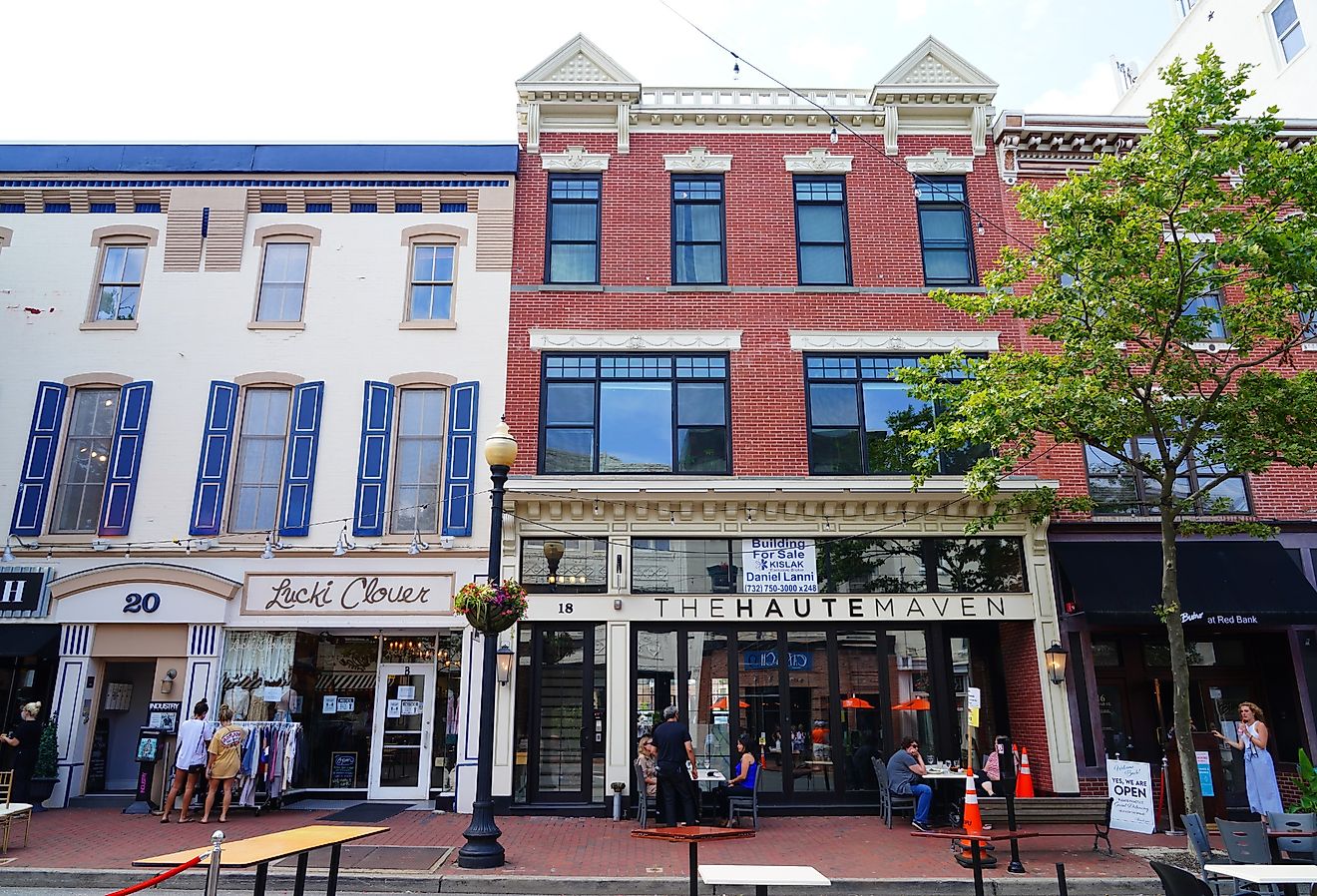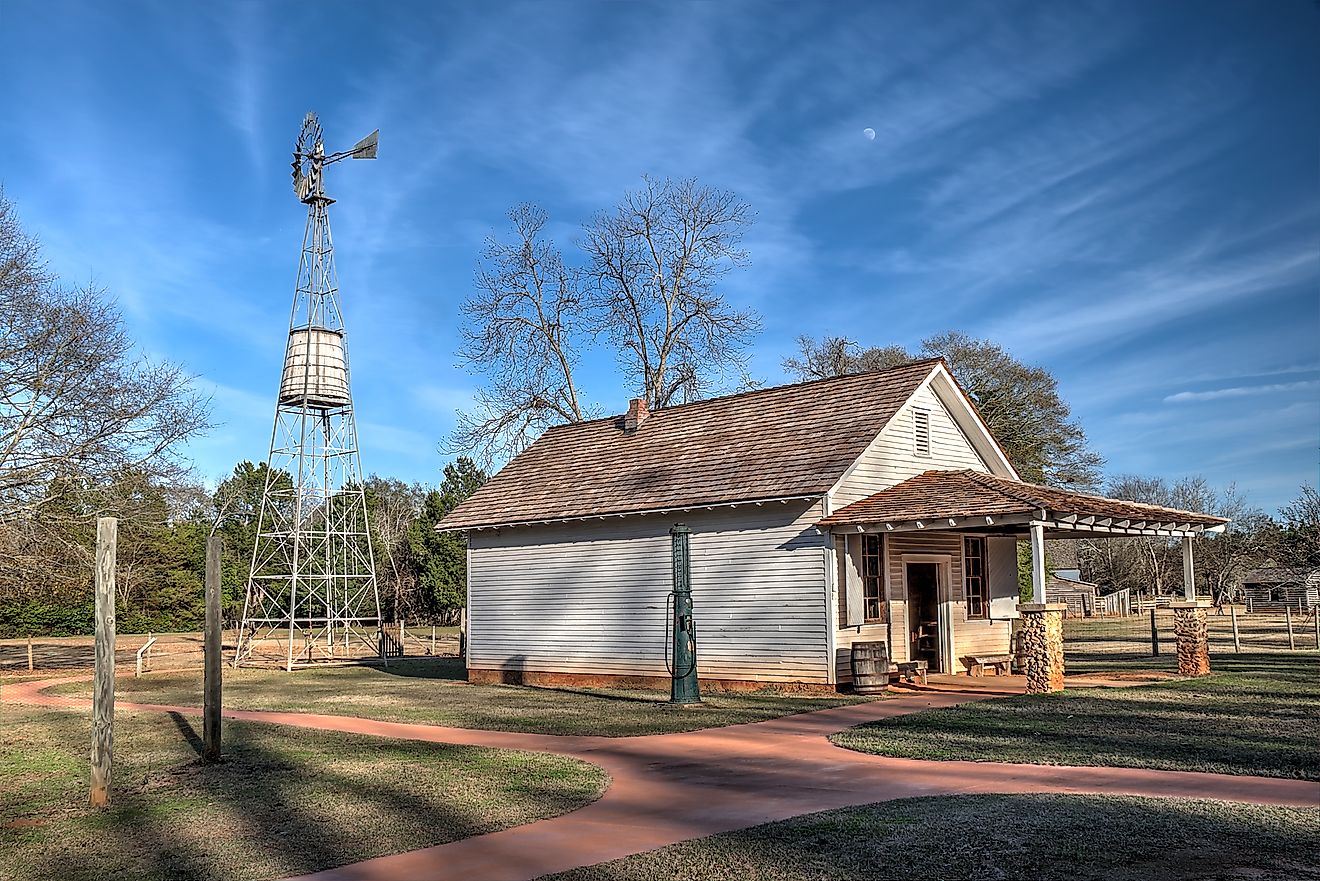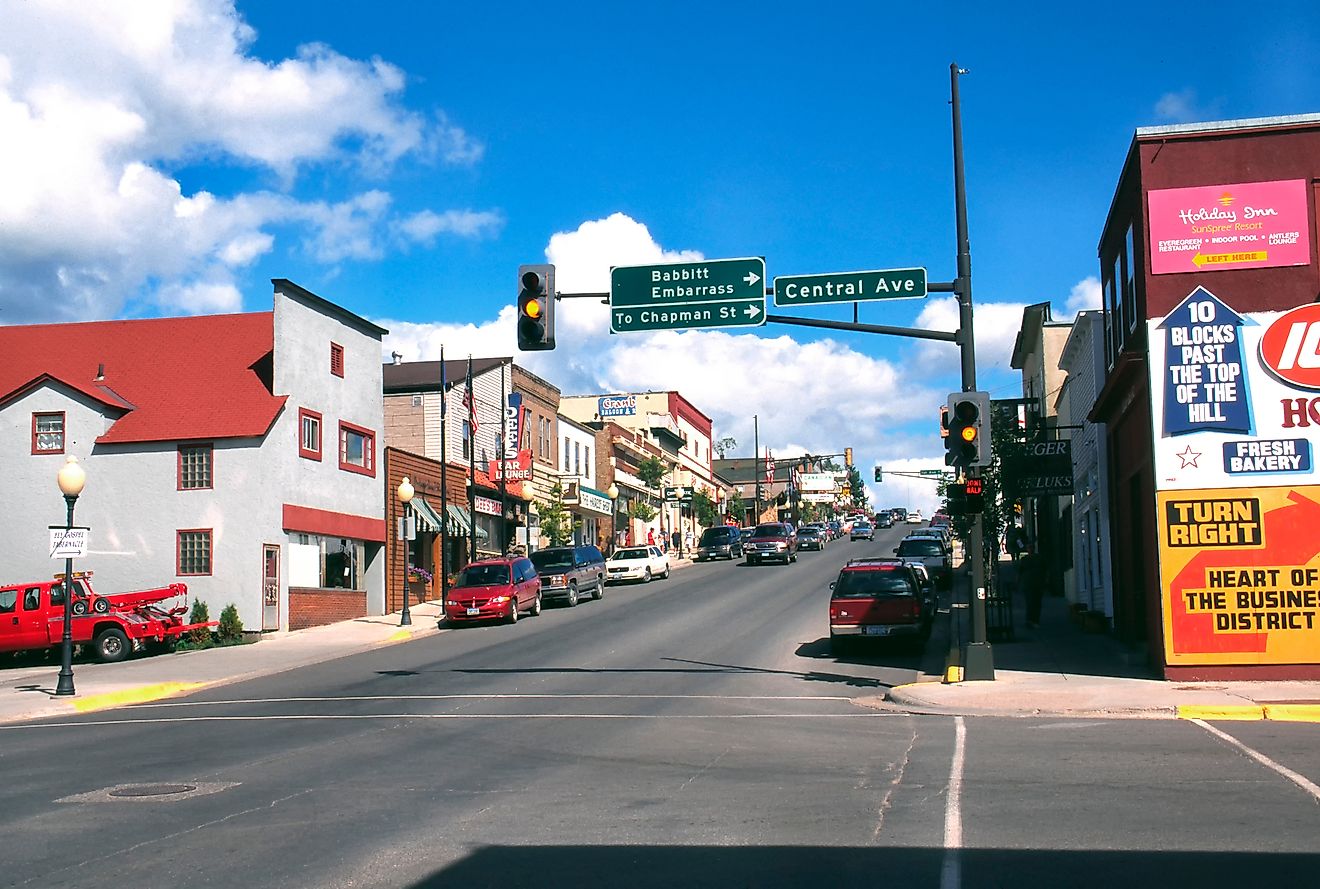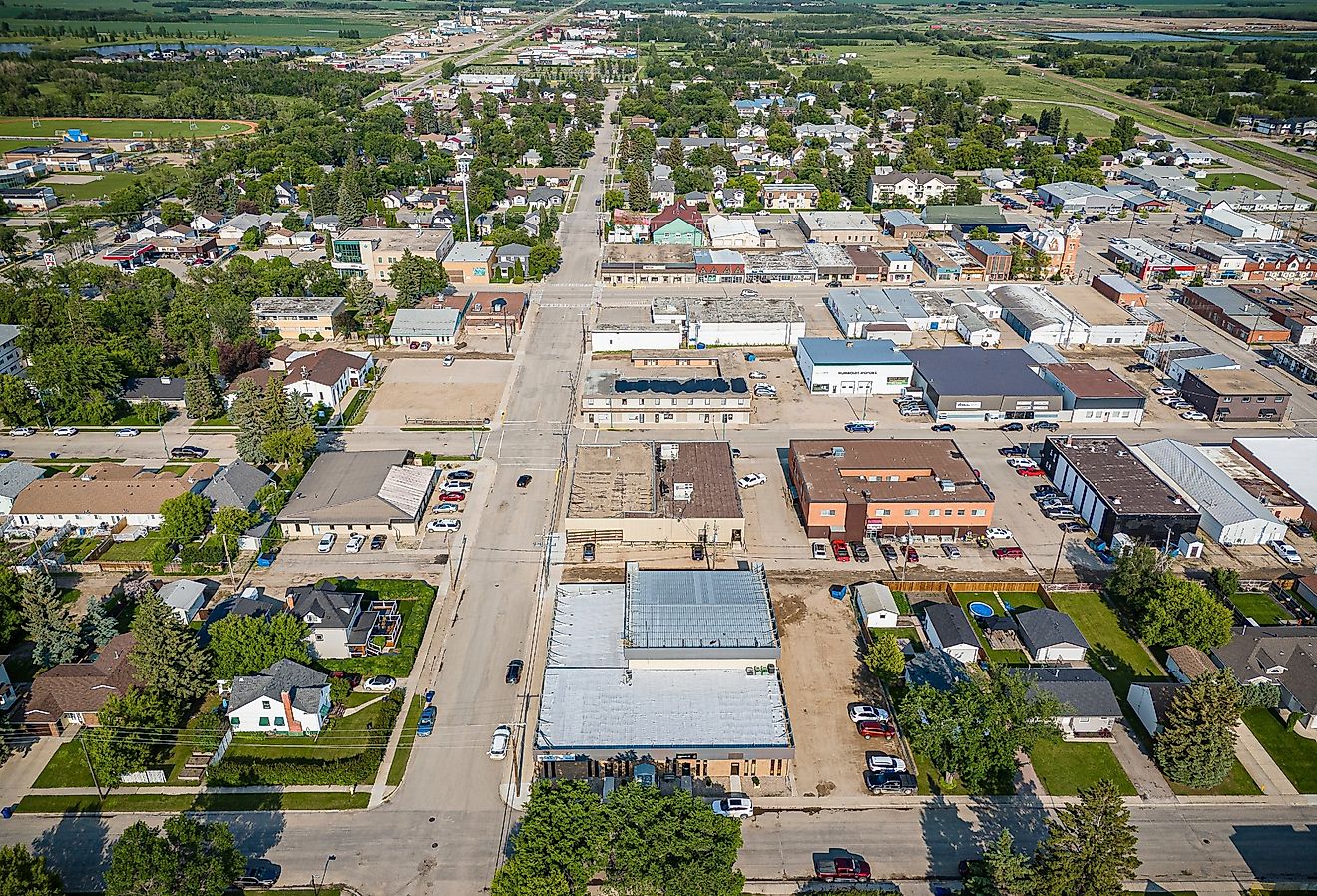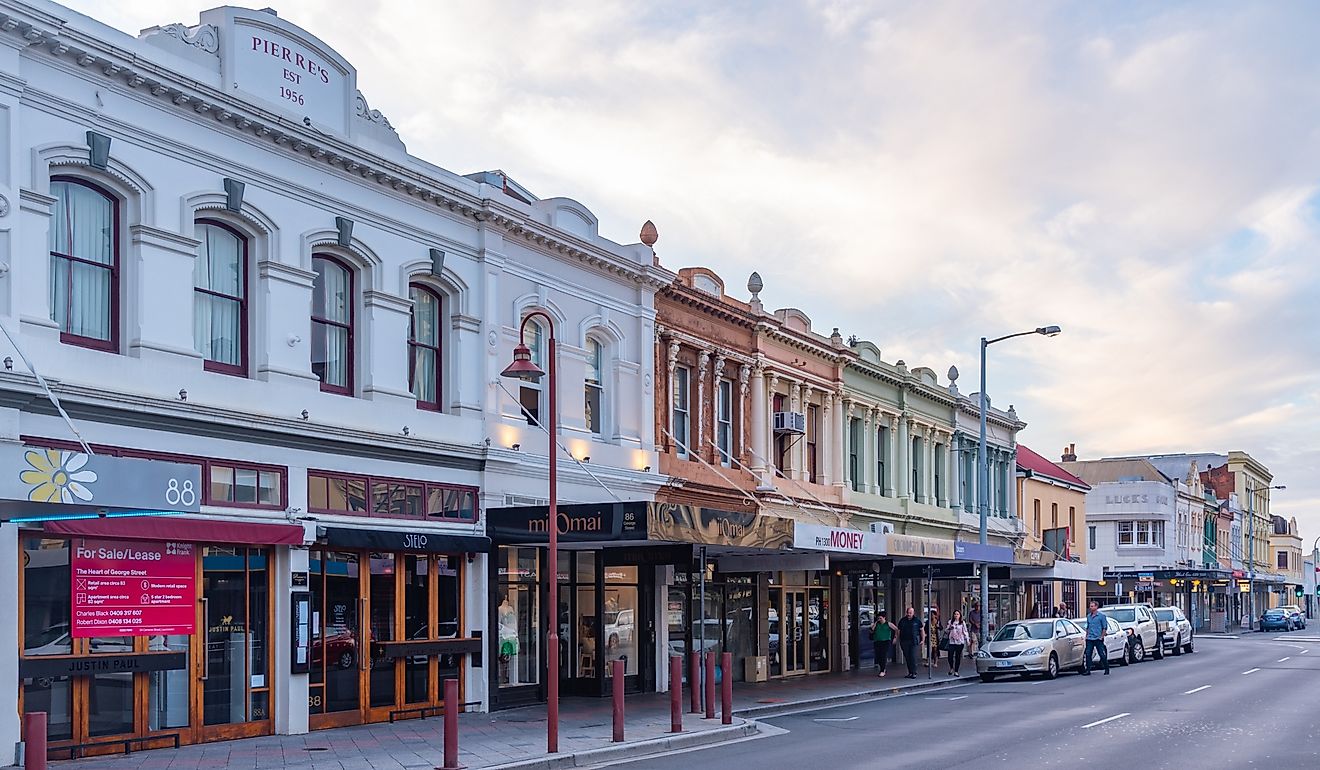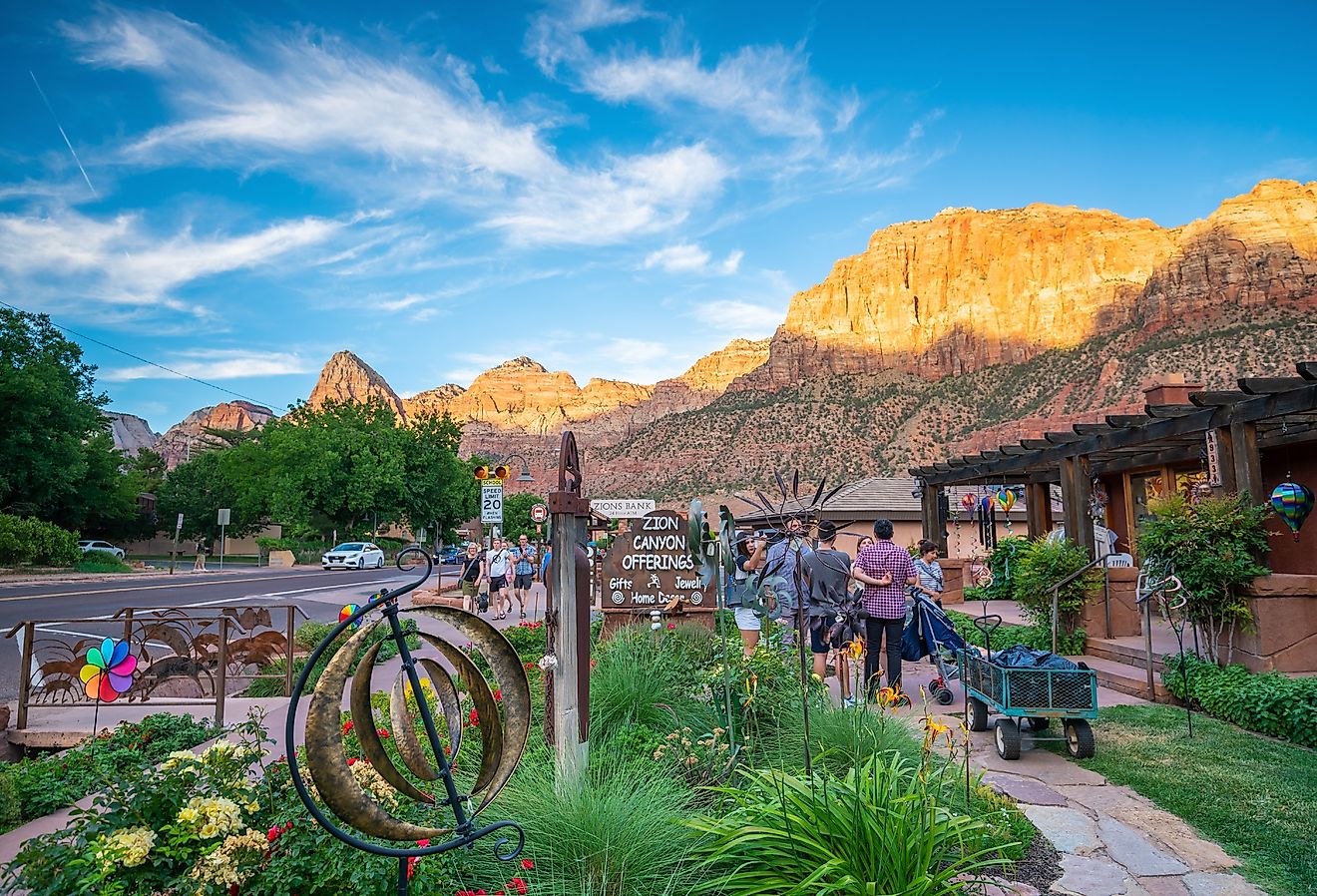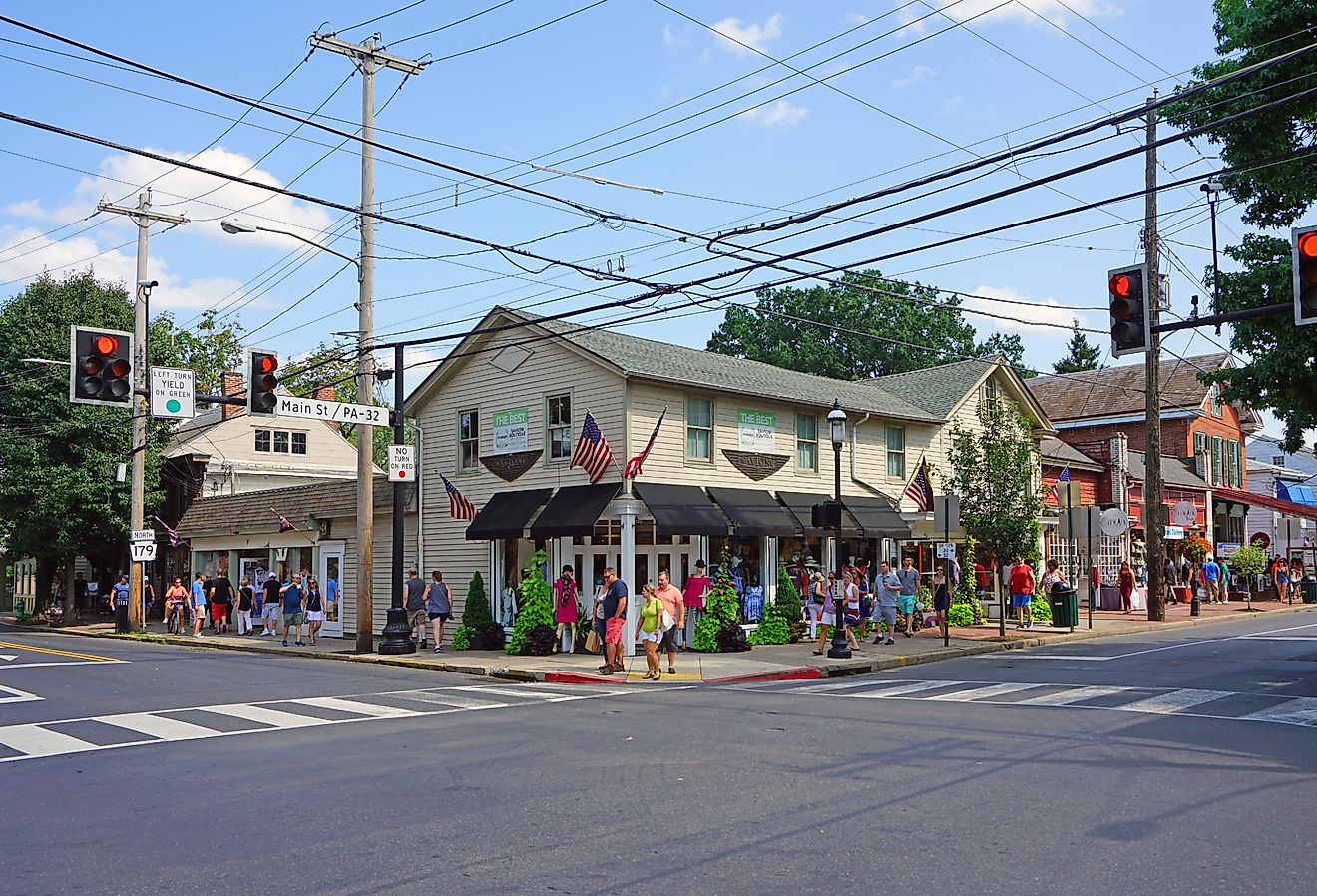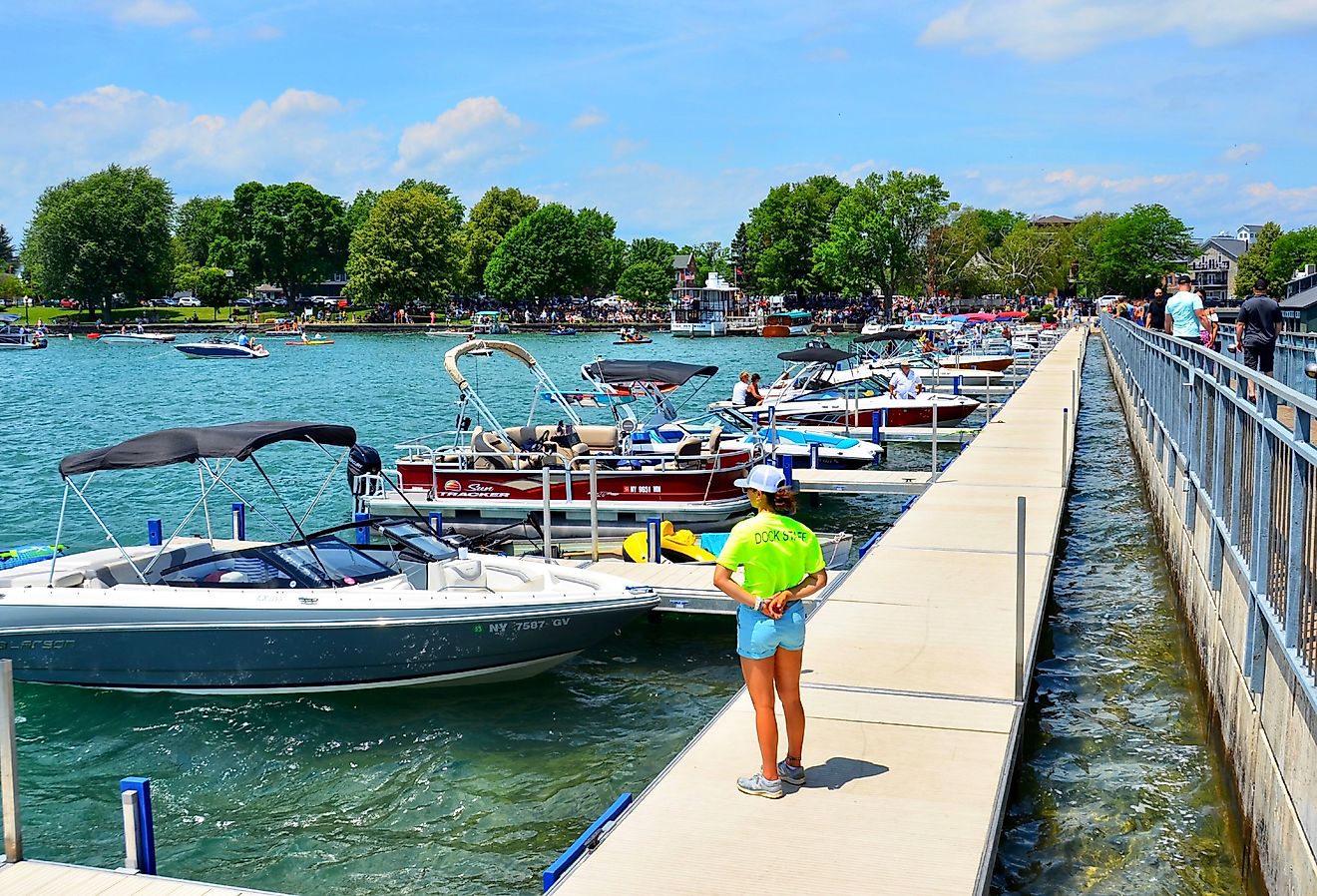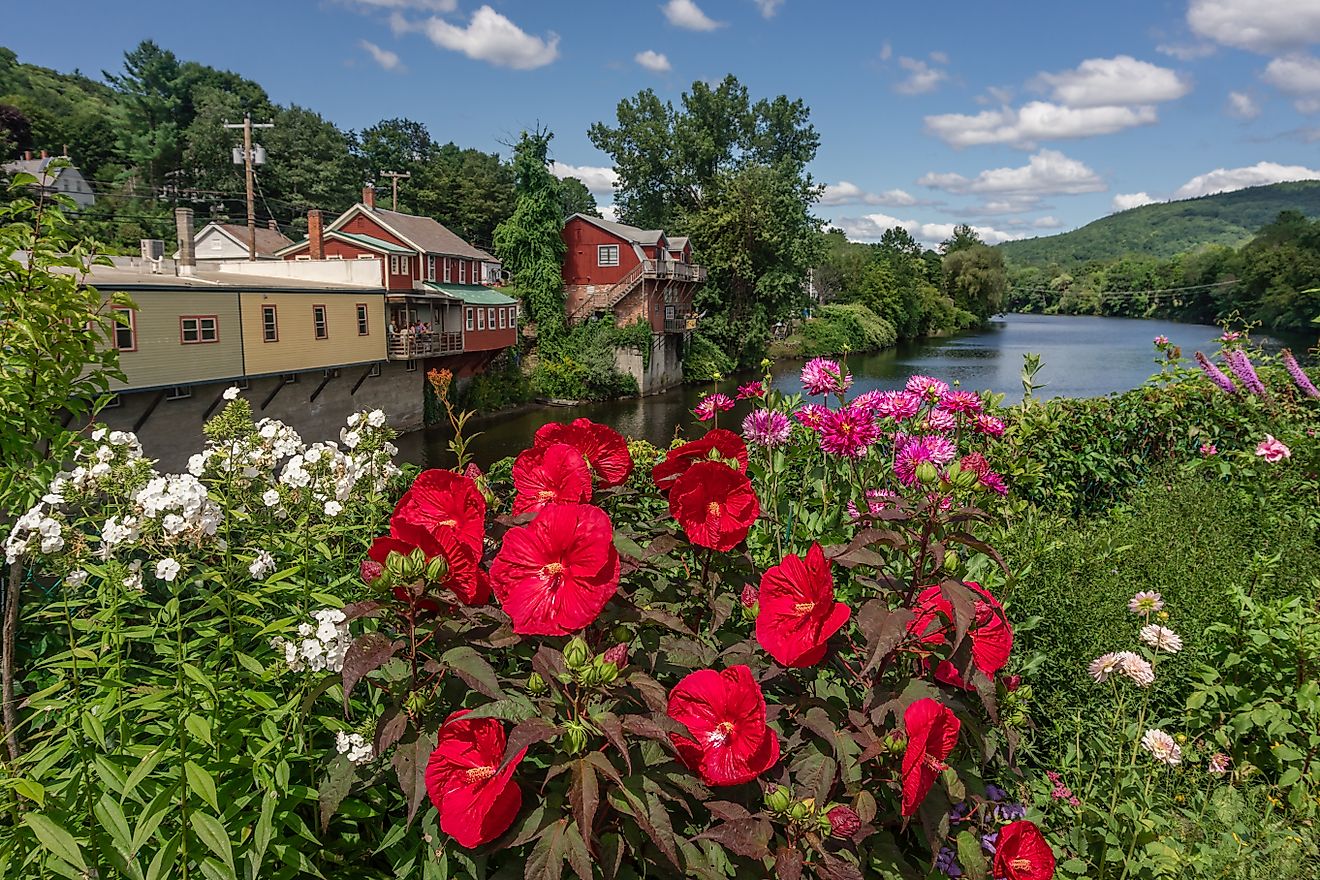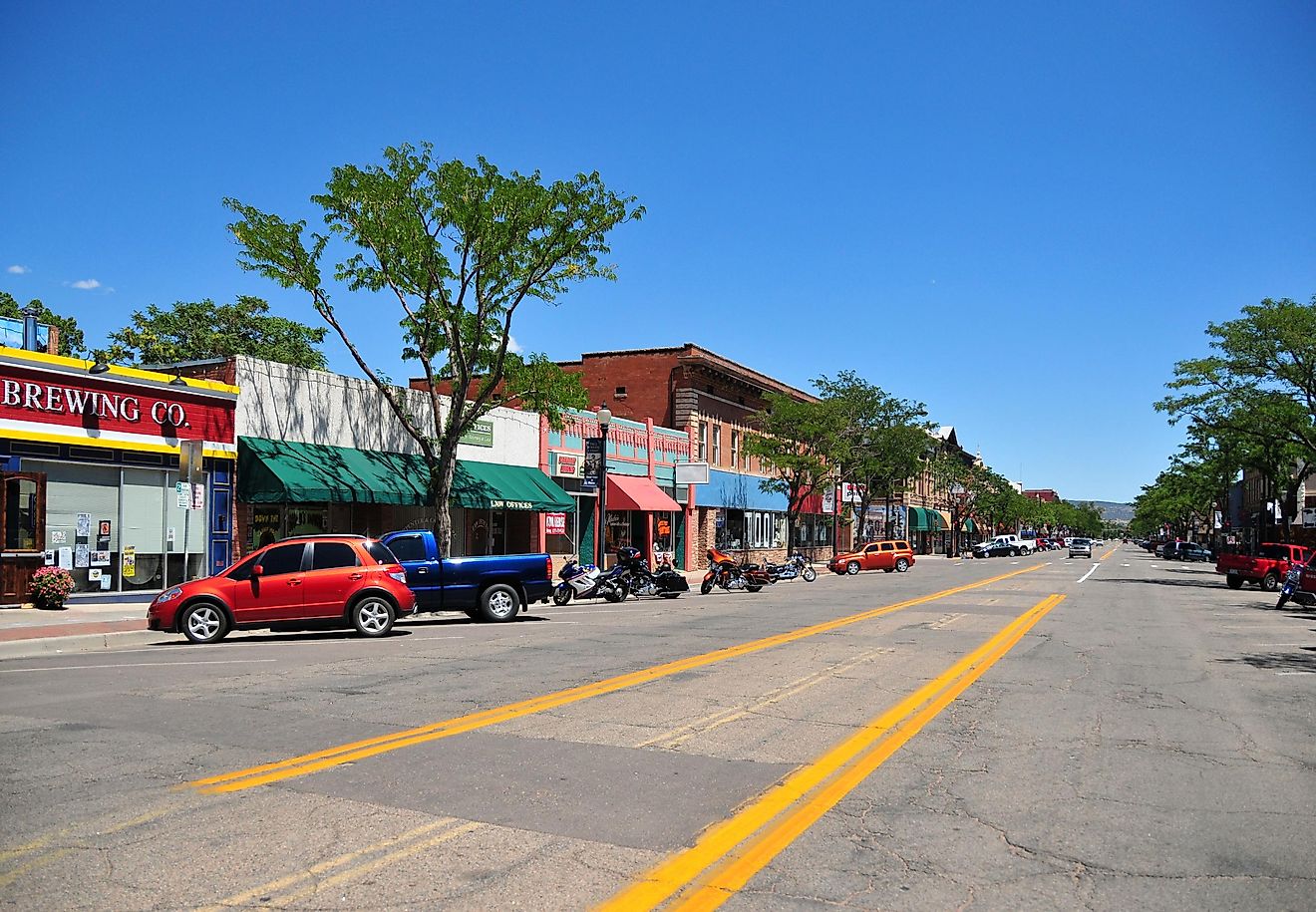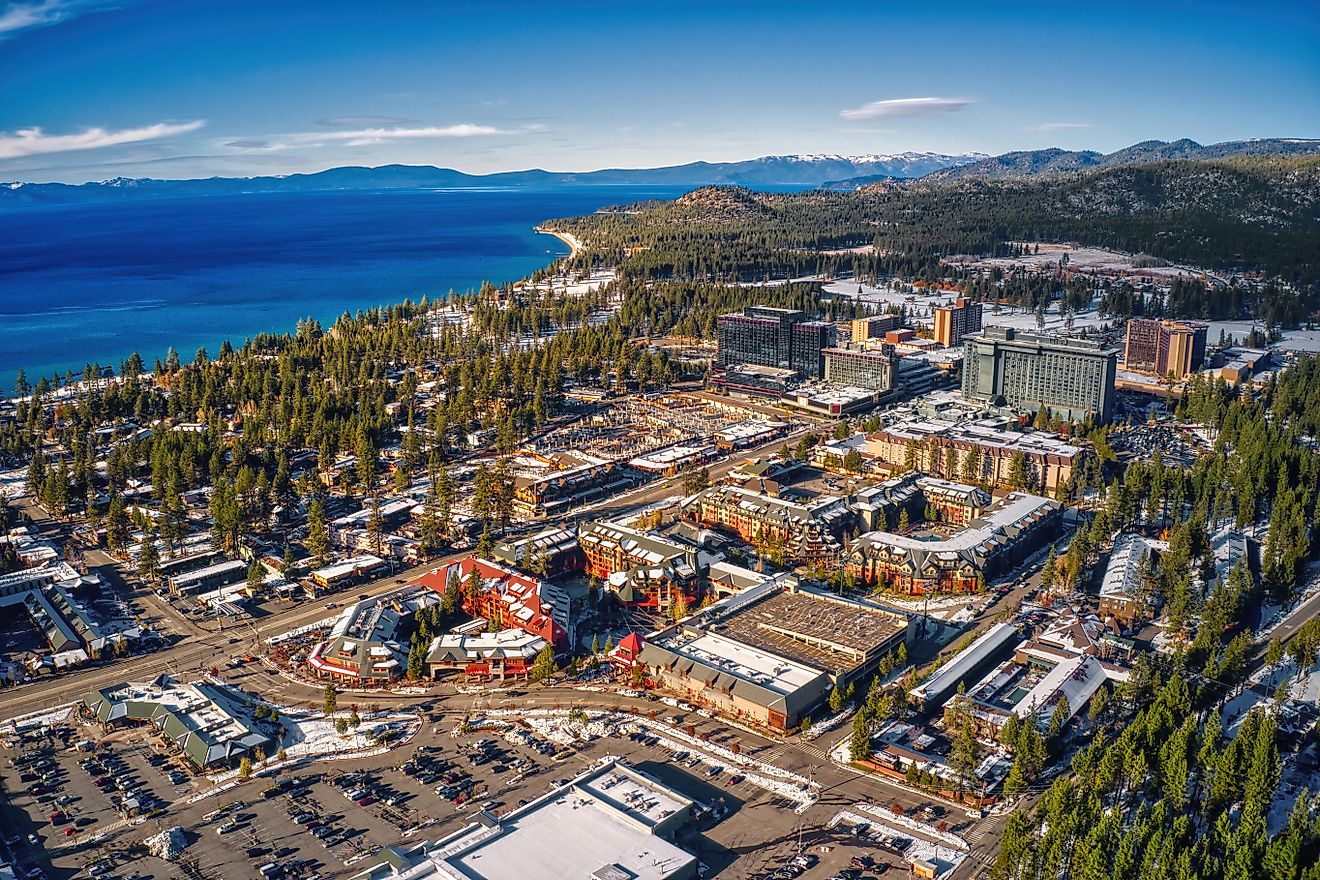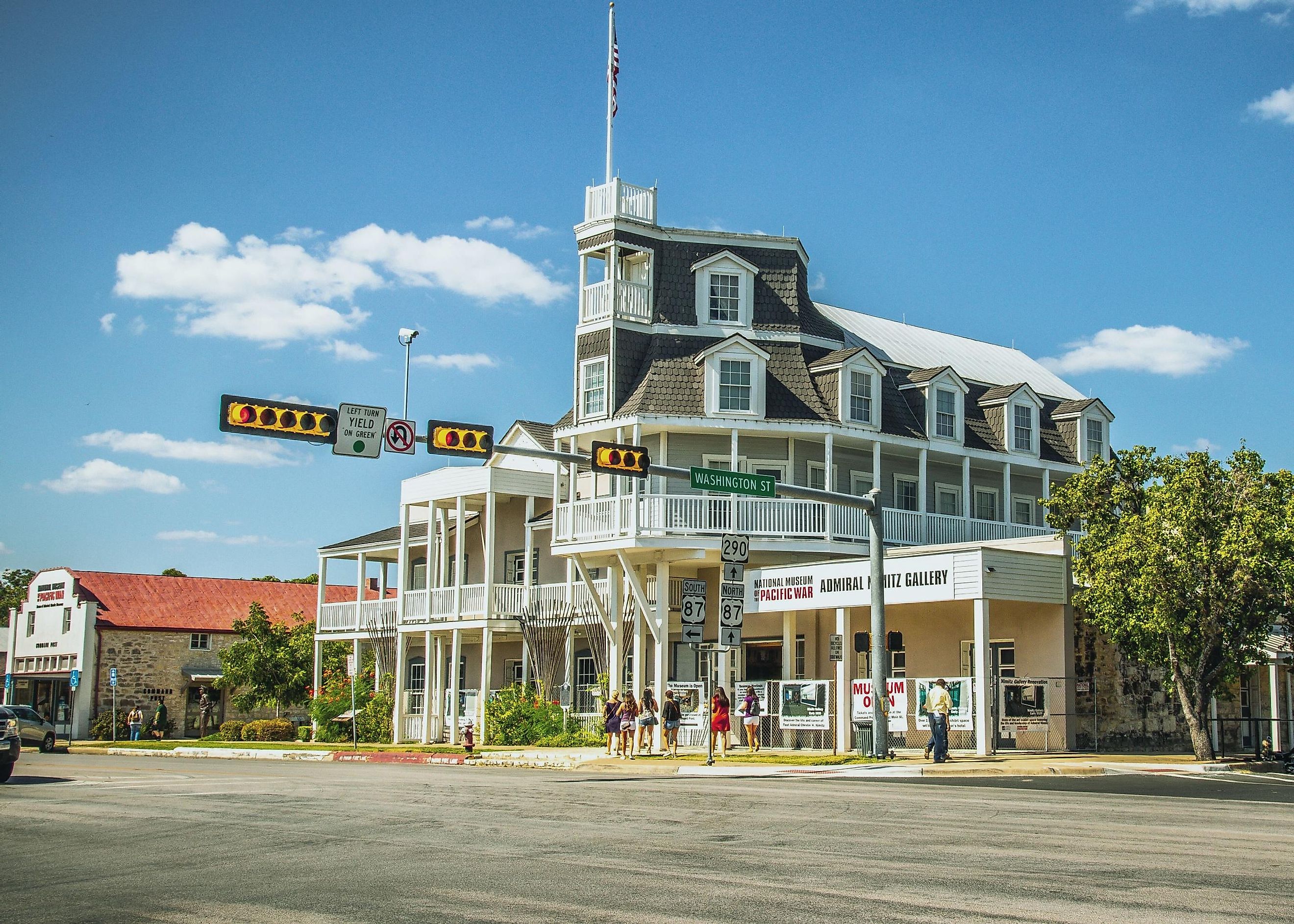
12 Off The Beaten Path Towns in Texas
Texas has a thousand legends about long-lost treasures and gold left behind by Spanish conquistadors. Although some of those stories might be true, the average visitor only needs to look inside Texas' fascinating towns to find true riches. That wealth comes in the form of community gatherings during events like Marfa's Lights Festival, artisanal goods in the market of Gruene, or the eccentric people you can meet. So give the 'Wild West' a chance and check out some of these lesser-known destinations.
Marfa

Marfa was originally a water stop for steam trains in the 1880s; it has since evolved into a cultural oasis in the vast desert landscape of West Texas. This remote town, almost three hours from the nearest major airport, boasts an intriguing blend of art, history, and natural phenomena. The Chinati Foundation, established by the minimalist artist Donald Judd, draws art enthusiasts from around the globe to its impressive collection of contemporary art, housed both indoors and as outdoor installations.

Every October, Marfa comes alive during the Marfa Lights Festival, a celebration of the mysterious and unexplained Marfa Lights phenomenon, where ethereal lights are observed dancing on the horizon. Additionally, film aficionados may be familiar with Marfa as the backdrop for the James Dean classic, "Giant", and more recently, the film "There Will Be Blood". Furthermore, the town's Ballroom Marfa serves as a hub for the visual arts, film, and music, frequently offering avant-garde exhibitions and performances. Just outside the town, the Marfa Plateau provides a pristine ecosystem for nature enthusiasts to explore, emphasizing the town’s unique combination of cultural and natural offerings.
Jefferson
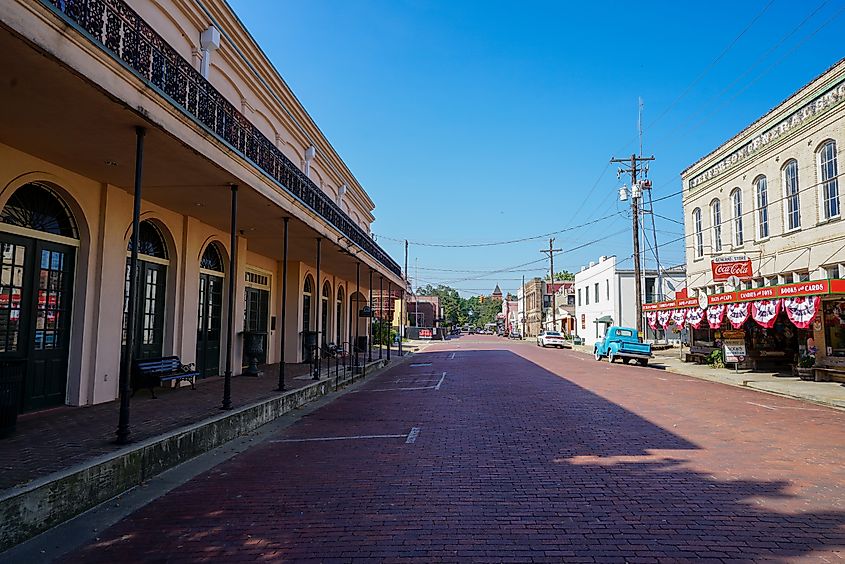
Once considered the most important river port in Texas, Jefferson has transformed from its 19th-century heyday into a destination rife with historical significance and local charm. Jefferson's well-preserved antebellum homes and streets offer a tangible sense of its storied past, attracting history enthusiasts and visitors alike. The annual Historic Jefferson Ghost Walk delves into local legends and stories, making for an engaging nighttime activity. Moreover, Jefferson is renowned for hosting the Pilgrimage Tour of Homes, an annual event in the spring, allowing attendees to step back in time and explore the town's historic residences.
The town's proximity to Caddo Lake invites outdoor enthusiasts to explore its unique cypress swamp ecosystem, providing opportunities for boating, fishing, and wildlife observation. Jefferson's Railway Museum, another focal point, emphasizes the town's historical connection to the rail industry, which once played a pivotal role in its development. For literature fans, the annual Girlfriend Weekend Author Extravaganza, hosted by the Pulpwood Queens, the largest "meeting and discussing" book club, gathers authors and readers for an extensive celebration of books.
Luckenbach
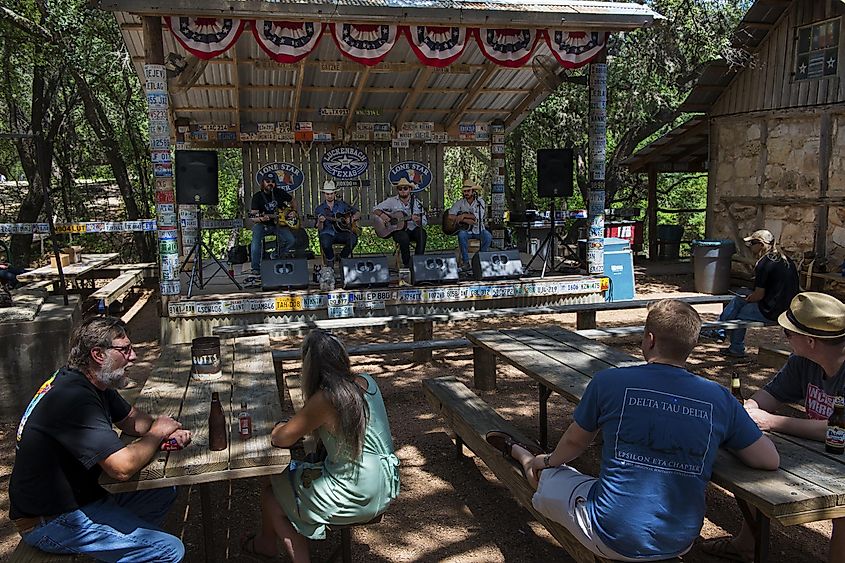
With a population often humorously cited as "3," Luckenbach, Texas, established in 1849, stands as a testament to authentic Texan spirit and culture. This town has had an undeniable impact on Texas music history. Central to its identity is the iconic Luckenbach Dance Hall, where both aspiring musicians and country music legends, like Willie Nelson and Waylon Jennings, have graced the stage. The establishment continues to offer live music events, ensuring that its musical legacy remains vibrant and inviting.
Throughout the year, Luckenbach hosts a variety of gatherings that cater to diverse interests: from guitar festivals which attract musicians nationwide, to the Mud Dauber Festival, celebrating both pottery and music. For motorcycle enthusiasts, the annual Return to the Hill Country event is a much-anticipated convergence, offering a blend of scenic rides, camaraderie, and of course, music. A visit to Luckenbach isn't complete without stopping at the town's general store, which doubles as a bar, offering visitors a chance to purchase memorabilia or simply soak in the town's storied atmosphere.
Gruene
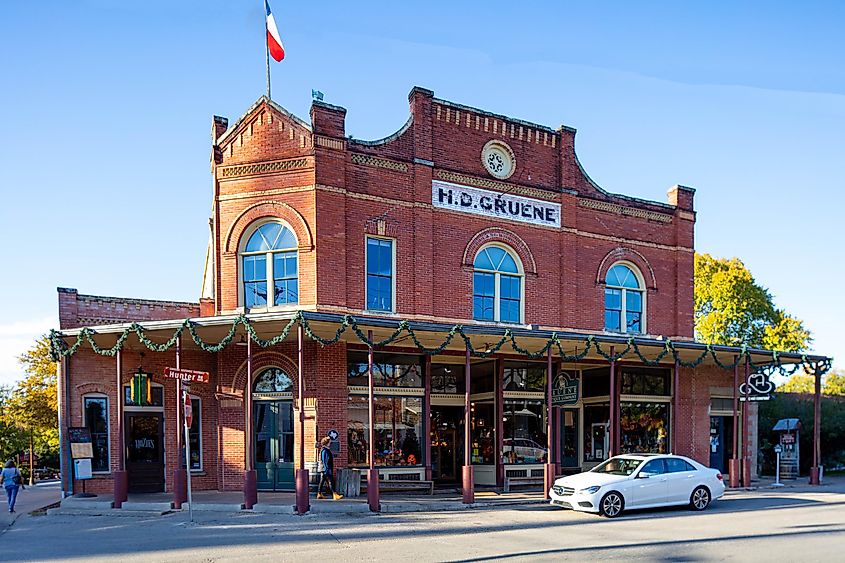
The focal point of the Gruene (pronounced "Green") is undoubtedly Gruene Hall, recognized as Texas' oldest continuously operating dance hall. A haven for live music, Gruene Hall has hosted performances from luminaries like George Strait, Lyle Lovett, and Robert Earl Keen. Beyond music, Gruene's strategic location on the banks of the Guadalupe River makes it a hub for recreational activities like tubing, rafting, and fishing, particularly during the summer months.
Visitors to Gruene are also often drawn to the Gruene Market Days, a monthly event where artisans showcase handcrafted items ranging from artworks to gourmet food. The town's annual Christmas Market Days in December provide a festive shopping experience, complemented by the charm of Gruene's historic district. Furthermore, Gruene offers a range of dining experiences, with The Gristmill River Restaurant & Bar being a standout, known for its scenic river views and Texas cuisine.
Salado
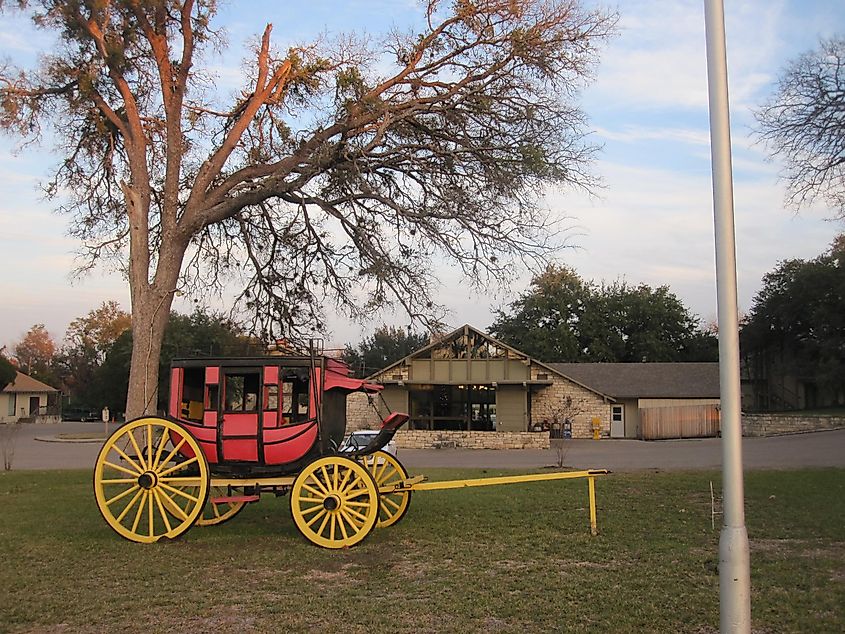
Salado lies between Austin and Waco; it is an emblem of Central Texas's heritage and natural beauty. One of Salado's signature features is its Main Street, a stretch that offers an array of art galleries, antique shops, boutiques, and restaurants, often set within well-preserved historic buildings. The Salado Creek, a limestone-bottom stream that meanders through the village, provides both a picturesque backdrop and opportunities for recreational activities such as picnicking and fishing.
Notably, the annual Scottish Gathering and Highland Games bring a touch of Scottish culture to Texas, with traditional games, music, and dance. Another noteworthy event is the Salado Art Fair, held annually, which draws artists from across the state to showcase their works, from sculptures to paintings. History enthusiasts will appreciate the many bed and breakfast establishments that dot the village, many of which have deep roots in the area's history. Additionally, the Salado Museum and College Park provide insights into the village's foundational days and its role as an educational hub in its early years.
Alpine
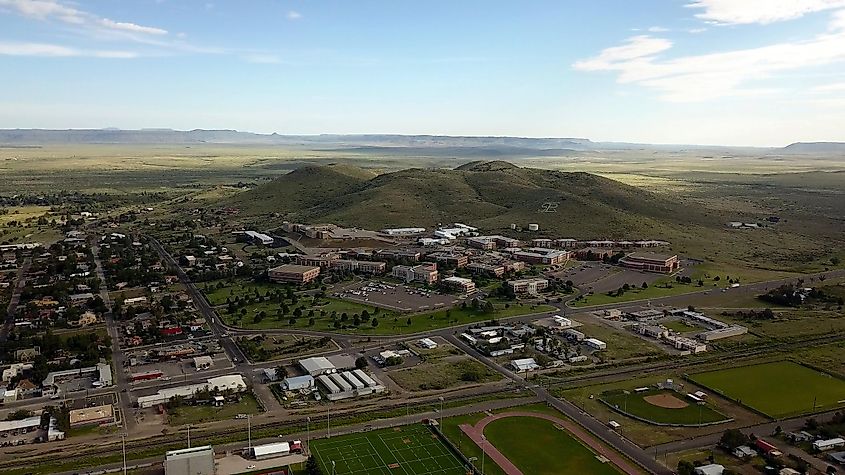
Often referred to as the "Gateway to Big Bend," Alpine, Texas, serves as a hub within the vast and rugged expanses of West Texas. Its unique geographical setting, surrounded by mountains, provides not only breathtaking views but also a surprisingly moderate climate, making it a year-round destination. Alpine's downtown is characterized by its locally-owned shops, galleries, and restaurants, which collectively offer a snapshot of the region's culture and hospitality. For those interested in the arts, the town boasts the Museum of the Big Bend, which offers insights into the area's rich history and diverse natural landscapes. Moreover, Alpine's proximity to the Big Bend National Park and the Davis Mountains makes it an ideal base for outdoor enthusiasts keen on exploring these natural treasures. Every year, the town hosts the Viva Big Bend Music Festival, drawing musicians and fans from across the state to celebrate Texas music. Furthermore, Sul Ross State University, located in Alpine, contributes to the town's vibrant atmosphere with various cultural and educational events open to the public. The annual Texas Cowboy Poetry Gathering, which celebrates the oral traditions of the working West, is another event that underscores Alpine's commitment to preserving and celebrating regional traditions.
Bandera

Touting itself as the "Cowboy Capital of the World," Bandera provides an authentic immersion into the state's ranching and rodeo heritage. In the Texas Hill Country, Bandera's landscape is as much a draw as its rich cultural tapestry, with the Medina River offering scenic vistas and recreational opportunities. Visitors can gain firsthand cowboy experiences at local dude ranches, which offer horseback riding, campfires, and traditional chuckwagon meals. Every year, Bandera hosts the Bandera Pro Rodeo, a showcase of traditional rodeo events, attracting participants and spectators from various regions. Another notable event is the Cowboy Mardi Gras, a unique Texan twist on the traditional celebration, complete with parades, costumes, and music.
For those keen on history, the Frontier Times Museum offers insights into Bandera's foundational years, its relationship with Native American tribes, and its evolution into the cowboy hub it is today. Live music is a staple in Bandera, and venues like Arkey Blue's Silver Dollar and the 11th Street Cowboy Bar regularly host local and regional country and western acts. Moreover, the town's proximity to the Hill Country State Natural Area offers hiking, bird watching, and equestrian trails for outdoor enthusiasts.
Fredericksburg
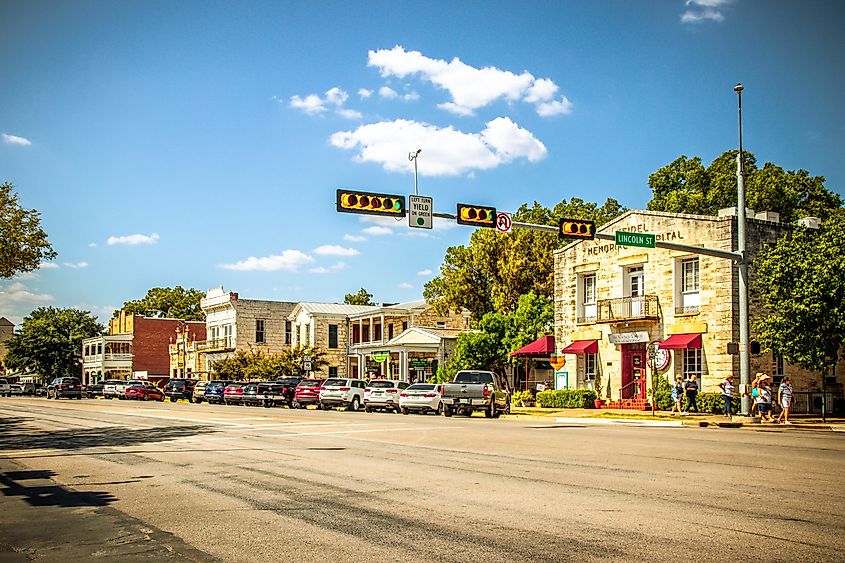
Fredericksburg offers a unique blend of Texan hospitality with deep-rooted German traditions as it was founded by German settlers in 1846. The town's Main Street, with its historic buildings, is lined with specialty boutiques, art galleries, and restaurants offering a mix of Texan and German cuisines. The Pioneer Museum Complex is a testament to the town's early days, providing insights into the lives of its original German settlers. Every year, the town hosts a multitude of events that reflect its heritage, with the Fredericksburg Oktoberfest being a standout, celebrating German music, food, and traditions.
Another significant draw is the National Museum of the Pacific War, dedicated to the history of World War II in the Pacific, a reflection of local son Fleet Admiral Chester Nimitz's influence. Just a short drive from the town center, the Enchanted Rock State Natural Area offers hiking trails and the opportunity to scale its massive pink granite dome, providing panoramic views of the surrounding landscapes. Additionally, the region's favorable climate has given rise to a flourishing wine industry, with numerous vineyards and tasting rooms dotted around Fredericksburg, making it a hub for wine enthusiasts.
Wimberley
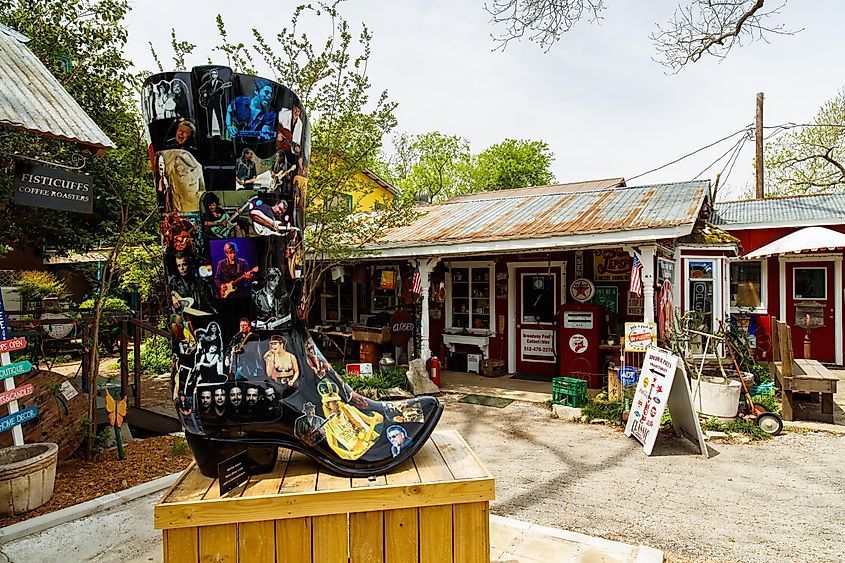
Wimberley has transitioned from a simple mill town to a vibrant destination renowned for its art community, natural attractions, and cultural events. The town's monthly Wimberley Market Days, the oldest outdoor market in the Texas Hill Country, offers visitors a plethora of handcrafted goods, antiques, and local produce. The Blue Hole Regional Park, one of the town's natural highlights, provides a refreshing swimming spot surrounded by ancient cypress trees, ideal for relaxation and nature appreciation. For those intrigued by geological wonders, Jacob's Well, a perennial karstic spring, offers both an awe-inspiring view and an opportunity for a cool dip during the warmer months. Annually, Wimberley hosts the VFW Rodeo, offering visitors an authentic taste of Texan rodeo culture, from barrel racing to bull riding. The town also places a significant emphasis on preserving its history, with the Wimberley Valley Museum offering insights into its past, from Native American habitation to its establishment as a mill town.
Rockport

Rockport's distinction as a significant bird-watching destination is marked by its title as the "Charm of the Texas Coast." Rockport Beach, with its calm waters and sandy shores, provides an ideal setting for relaxation, swimming, and fishing. The town's affinity for the arts is evident at the Rockport Center for the Arts, which hosts exhibitions, workshops, and festivals, promoting both local and visiting artists. A nod to its maritime heritage, the Texas Maritime Museum offers insights into the state's rich naval and shipping history. One of Rockport's standout events is the Rockport Art Festival, held annually, drawing artists from across the country to showcase their works, from paintings to sculptures.
Moving on, the HummerBird Celebration, another significant event, celebrates the migration of the Ruby-throated Hummingbird, attracting bird enthusiasts keen on observing this phenomenon. Additionally, the Aransas National Wildlife Refuge, located nearby, is a sanctuary for diverse bird species, including the endangered Whooping Crane, offering bird-watching opportunities in a pristine natural setting. Rockport's commitment to preserving its history is visible at the Fulton Mansion State Historic Site, reflecting the opulence of the late 1800s.
Gonzales

Heralded as the site where the first shot for Texas independence was fired in 1835, Gonzales stands as a testament to the state's resilient spirit. This historical significance is aptly captured at the Gonzales Memorial Museum, where the original "Come and Take It" cannon, a symbol of Texan defiance against Mexican forces, is on display. Beyond its pivotal role in Texas history, Gonzales offers a vibrant cultural scene. The town's historic downtown, adorned with 19th-century architecture, is replete with shops, restaurants, and theaters that echo its rich heritage. An annual event that draws attention is the "Come and Take It" Celebration, which commemorates the town's role in the Texas Revolution with parades, concerts, and reenactments.
For nature enthusiasts, the Palmetto State Park offers a unique landscape filled with dwarf palmettos, providing hiking, camping, and canoeing opportunities in its swampy terrain. The Gonzales Pioneer Village Living History Center, another significant attraction, offers a journey into the past with its collection of historic buildings and artifacts, replicating life in the 1800s. Gonzales is also home to several historic homes and mansions, like the Eggleston House, showcasing the architectural elegance of bygone eras.
Canyon

Canyon is home to the second-largest canyon in the United States: the Palo Duro Canyon. This natural marvel, often referred to as the "Grand Canyon of Texas," offers visitors a chance to experience breathtaking vistas, hiking trails, and historical sites that trace back to ancient Native American civilizations. The Palo Duro Canyon State Park, encompassing a significant portion of this geological wonder, hosts the "TEXAS" outdoor musical drama every summer, providing an engaging narrative of the state's history set against the canyon's majestic backdrop. Within Canyon itself, the Panhandle-Plains Historical Museum, situated on the West Texas A&M University campus, stands as the largest history museum in Texas. It offers insights into the region's geology, paleontology, and cultural heritage, spanning from the age of the dinosaurs to the oil booms of the 20th century. Annual events like the July 4th festivities and the Canyon Chamber Chow-Down showcase the town's community spirit and offer a blend of traditional activities, from parades to cook-offs. For art enthusiasts, the town has numerous galleries that highlight local and regional artists, exemplifying the rich artistic culture of the Texas Panhandle.
The next time you hear an acquaintance boasting about a trip to Austin or Dallas, you can smugly remember that you know the hidden secrets of the Lone Star State. However, that is the advantage of being the 2nd largest state in the USA— there are venues for the crowds and tourists, and there are sanctuaries for those looking to enjoy a calmer atmosphere. So giddy-up and get on down there before too many folks realize what they are missing.

